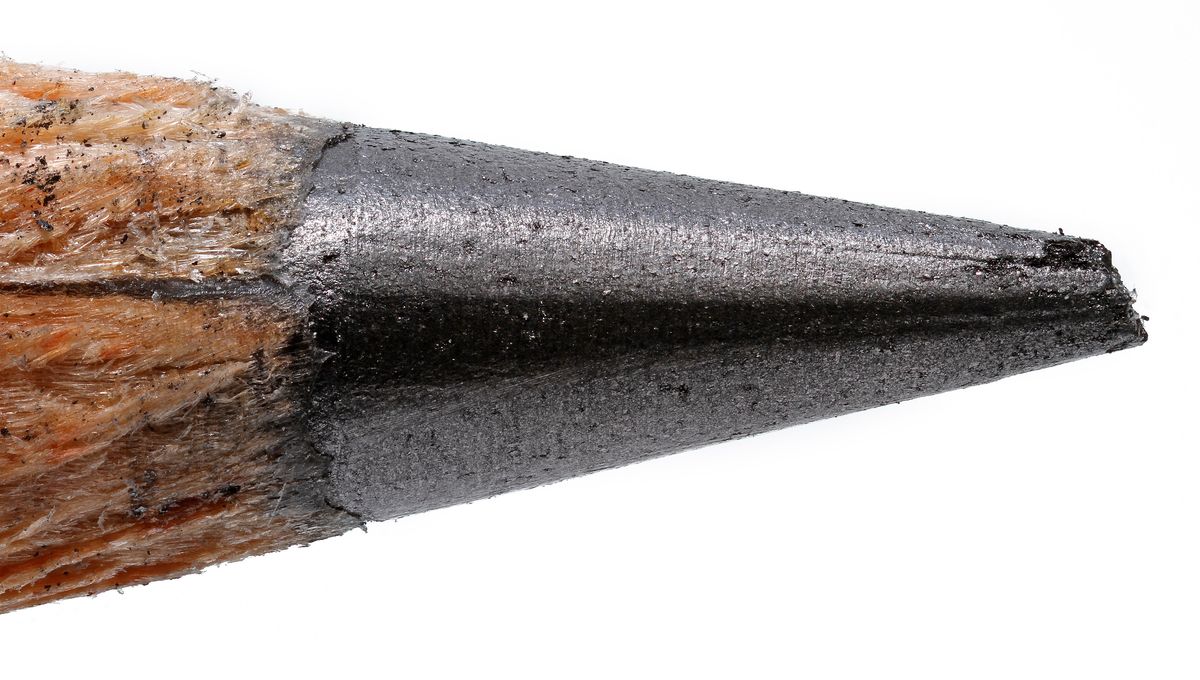
Superconductive materials can transmit electricity without resistance, making them fundamental for advanced and efficient technologies. The current drawback is that this property is only obtained below a certain temperature, often pretty close to absolute zero. Even high-temperature superconductors remain below freezing – but scientists are hunting for the material that would be superconductive at room temperature.
The latest “hat in the ring” for this quest is actually a pretty common material in a pretty peculiar configuration: graphite, the substance that makes up the writing part of pencils. Not all graphite is created equal – single layers of it, called graphene, are already been hailed as a miracle material with interesting properties. This work doesn’t focus on that, but rather on highly oriented pyrolytic graphite (HOPG).
HOPG is a synthetic form of graphite, where the crystallites of graphite are aligned with each other so that the angles between them are extremely small. This is crucial for the interesting properties this material possesses beyond what you can get from your pencil. Graphene can be obtained by using scotch tape to remove a single-atom-thick layer of graphite. Even in this work, the sticky tape came in handy.
“First, we realized a scotch tape cleaving of the HOPG samples. The cleaved surface has wrinkles that form something like a set of sheaves. These wrinkles make a home for superconductivity,” co-author Dr Valerii Vinokur, Chief Technology Officer for the US at Terra Quantum, told IFLScience.
It is in the wrinkles of this material that the team believes Cooper pairs form. These are pairs of electrons that begin interacting and end up bound – the particle underpinning superconductivity. In superconductive materials, this happens below a specific temperature, called the critical temperature. Researchers in this work couldn’t exactly pinpoint a value for it, but it was around room temperature, which is 300 Kelvin (27 °C or 80 °F)
“Since these HOPGs are very inhomogeneous, the critical superconducting temperature varies along the sample. And, as we have demonstrated in our work, the superconductivity in the region with the best metallicity appears at room temperature, 300K,” Dr Vinokur told IFLScience.
The team measured the resistance and magnetization of the material, and it is consistent with the behavior seen in other superconductive materials. The importance of having a specific value for the critical temperature is that the changes in the material should happen consistently and sharply after that threshold is crossed.
In our investigation into the claim that LK-99 was a room-temperature superconductor last summer, we interviewed Professor Susie Speller from the Oxford Centre for Applied Superconductivity. She discussed the importance of evaluating the electrical resistance and magnetic properties of the material. However, she also stressed the importance of measuring the heat capacity of the material, which should also see a dramatic transition once the critical temperature is crossed.
We asked Dr Vinokur why the heat capacity was not included in the analysis. “The two basic ways to confirm superconductivity are to measure the resistance and magnetization. Measuring the change in the specific heat capacity is the more exquisite way that can be used to extract the additional data, but this is not the basic way for establishing superconductivity. We did establish superconductivity by measuring the resistance and magnetization,” Dr Vinokur replied.
As is praxis with extraordinary claims, the scientific community will need to assemble extraordinary evidence – not just the heat capacity, but the many other ways to test superconductivity. Having a material that is superconductive at room pressure and temperature would be a civilization-changing breakthrough, bringing forth technologies that are currently only possible in our imagination.
A paper discussing this work is published in the journal Advanced Quantum Technologies.
Source Link: New Room Temperature Superconductor Throws Hat In The Ring – This Time, It’s Graphite